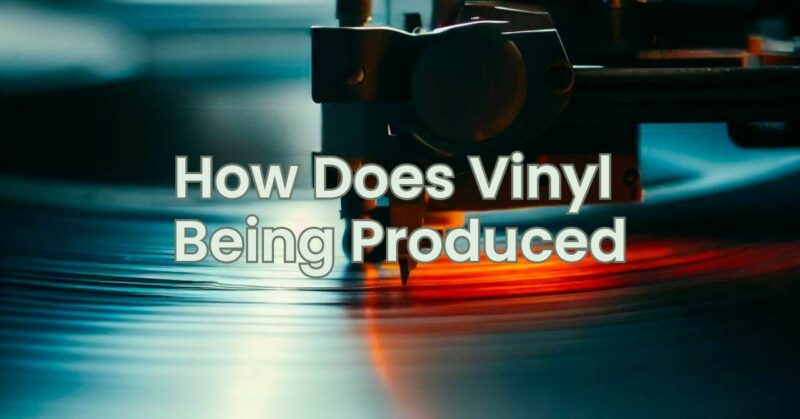Vinyl records have a distinct charm and appeal that has captivated music enthusiasts for decades. From the grooves that hold the music to the iconic album artwork, vinyl records have a unique production process that sets them apart from other formats. In this article, we’ll explore the step-by-step manufacturing process of vinyl records and shed light on how these beloved musical artifacts are produced.
- Mastering: The first step is to create a master recording. This is done by recording the music onto a high-quality tape or disc.
- Cutting the lacquer: The master recording is then used to cut a lacquer disc. This is a thin disc of acetate that is coated with a special lacquer. The sound waves from the master recording are used to cut grooves into the lacquer disc.
- Making the stamper: The lacquer disc is then used to create a stamper. This is a metal mold that is used to press vinyl records.
- Pressing the vinyl records: The stamper is placed in a press, and molten vinyl is poured into the mold. The vinyl is then cooled and solidified, creating a vinyl record.
- Adding the label: The vinyl record is then labeled with the artist’s name, the album title, and other information.
- Packaging and shipping: The vinyl records are then packaged and shipped to stores.
The process of producing vinyl records is a complex and time-consuming one. However, the result is a physical object that can be held and cherished, and that offers a unique listening experience that cannot be replicated by digital formats.
Here are some additional details about each step in the process:
Mastering: The mastering engineer is responsible for taking the raw audio recordings and creating a master recording that sounds as good as possible. They do this by adjusting the levels, equalizing the sound, and adding compression. The master recording is then used to create all of the copies of the record, so it is important that it sounds great.
Cutting the lacquer: The lacquer disc is cut by a lathe. The lathe is a machine that spins the lacquer disc at a high speed. As the disc spins, a diamond stylus is used to cut grooves into the lacquer disc. The grooves are an exact replica of the sound waves from the master recording.
Making the stamper: The stamper is made by electroplating. Electroplating is a process that uses electricity to deposit a thin layer of metal onto a mold. In this case, the mold is the lacquer disc. The metal that is deposited is usually nickel or copper.
Pressing the vinyl records: The vinyl records are pressed by a hydraulic press. The stamper is placed in the press, and molten vinyl is poured into the mold. The vinyl is then cooled and solidified, creating a vinyl record.
Adding the label: The vinyl record is then labeled with the artist’s name, the album title, and other information. The label is usually made of paper or cardboard, and it is glued to the record.
Packaging and shipping: The vinyl records are then packaged and shipped to stores. The packaging usually includes a sleeve that protects the record from damage. The records are often shipped in boxes that are filled with packing material to prevent them from getting scratched or damaged during shipping.
The production process of vinyl records involves a combination of precise audio engineering, electroplating techniques, vinyl formulation, and pressing. From the initial mastering and lacquer cutting to the final packaging and distribution, each step contributes to the creation of the beloved vinyl records that music enthusiasts cherish.
While digital formats have gained prominence, vinyl records continue to offer a unique and tangible listening experience. The craftsmanship and attention to detail involved in the production of vinyl records contribute to their enduring appeal and make them cherished artifacts in the world of music.


